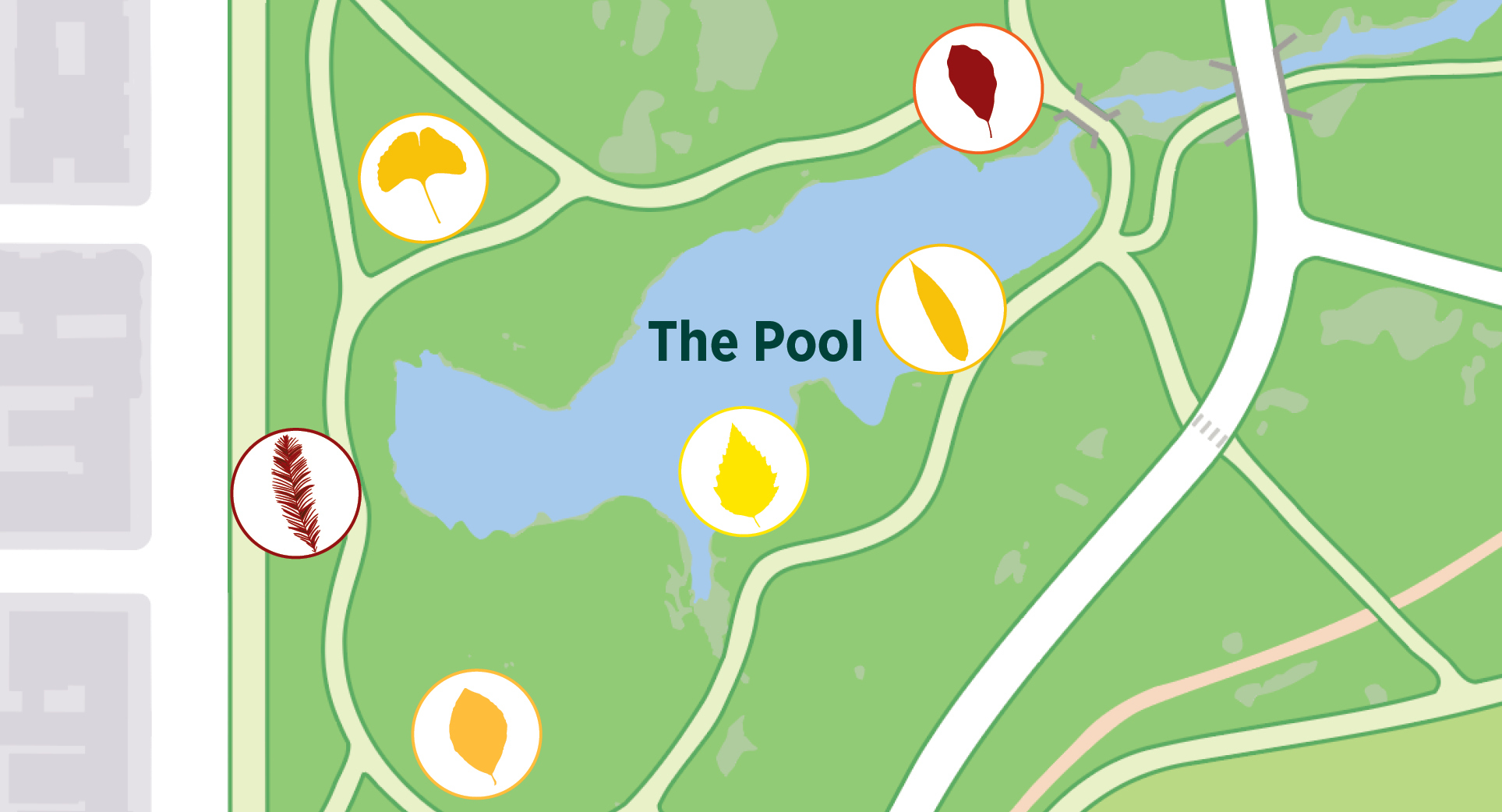Autumn Amble at the Pool

Take a breath of fresh air, relax, and enjoy your self-guided Autumn Amble tour.
Thank you for generously supporting the Central Park Conservancy, and welcome to the Pool! While admiring the spectacular fall foliage of just a few of Central Park’s roughly 18,000 trees, use this tree guide to assist you in identifying six separate tree species. Along your walk, you will traverse a path, with some brief interludes on the grassy bank, while a rushing waterfall enlivens the serene landscape. Take a breath of fresh air, relax, and enjoy your self-guided Autumn Amble tour.
Best Practice
We recommend all guests wear a mask. Maintain a personal distance of six feet or more from others if not vaccinated. Please arrive on time for your confirmed time slot.
Tree Species



River Birch

The river birch is one of only a few heat-tolerant birch species, making it a good fit for cities and urban environments. Younger river birch bark is a flaky salmon/pink/red/brown color, and it sheds off in thin and thick layers, sometimes resembling tissue paper; mature trees have thicker, deeper furrowed bark somewhat resembling ginkgo bark. Native Americans were known to use boiled sap from the tree as sweetener, similar to maple syrup.



Weeping Willow

Willow bark is a natural supplement sometimes used as an alternative to aspirin; the bark also contains a natural root development hormone that can be used to support propagation of new plants by making “willow water”: soaking willow trees in water and making a sort of willow tea.



Tupelo

Commonly known as black tupelo or black gum, these trees are a favorite among birds; after leaves fall, female trees show off blue-black fruits, which birds and other wildlife devour. They are one of the most beautiful foliage trees, displaying the full spectrum of color at once.



Ginkgo

Ancient arboreal specimen, ginkgo trees are over 250 million years old (fossils of ginkgos date back 270 million years). Trees are male or female (dioecious). The female fruit is malodorous as it matures, while the male produces flowers and has no fruit.



Baldcypress

The baldcypress is a deciduous conifer (meaning it loses its needles in the winter). Its rot-resistant lumber has made it a popular material for NYC’s ubiquitous water towers. The unique knees in its bark, appear most prominently when the tree is close to water, although their precise function is not known.



European Beech

The European beech tree dates back to the Middle Ages and was considered “historical message boards,” as its bark is fairly easy to carve into (smooth, light gray bark sometimes compared to elephant skin). Produces edible beech nut seeds.
